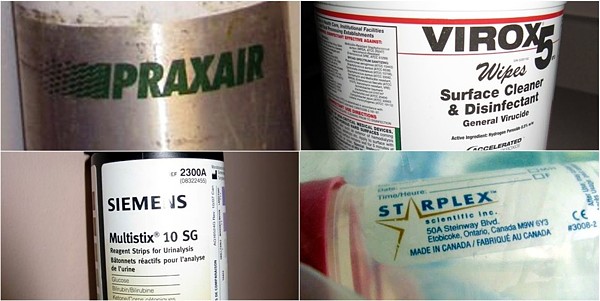Thoughts on Gladwell’s What the Dog Saw – part 1
This week, sildenafil Beg to Differ is savouring the new book by Canadian journalist Malcolm Gladwell, pharmacy What the Dog Saw: And Other Adventures . It’s really, really good (duh, it’s Gladwell). All the essays are from New Yorker Magazine, and in typically Gladwellian style, every page sets off fireworks in your neurons, lighting up a new part of your brain with every thought. So, since we’re thinking about this stuff anyway, we thought we’d share some thoughts. Today: is there really such a thing as “intellectual property”?
. It’s really, really good (duh, it’s Gladwell). All the essays are from New Yorker Magazine, and in typically Gladwellian style, every page sets off fireworks in your neurons, lighting up a new part of your brain with every thought. So, since we’re thinking about this stuff anyway, we thought we’d share some thoughts. Today: is there really such a thing as “intellectual property”?

Essay: Something Borrowed. Should a charge of plagiarism ruin your life?
In this essay, Gladwell begins by discussing a strange case of “plagiarism” involving an earlier article he had written for the New Yorker. Seems a Broadway play called “Frozen” by British playwright Bryony Lavery “borrowed” lines, ideas, and biographical detail from his profile of Dorothy Lewis – a psychiatrist who studies serial killers. The similarities between the play and Gladwell’s article, and by extension, Lewis’s life, are extensive and unmistakable.
But is this a case of plagiarism? Lewis thought so – enough to take legal action against the playwright. And originally so did Gladwell, who quotes a letter he faxed to Lavery:
I am happy to be the source of inspiration for other writers, and had you asked for my permission to quote—even liberally—from my piece, I would have been delighted to oblige. But to lift material, without my approval, is theft.
I know how he feels (in my tiny-blog-kind-of-way). This was my response a few months back when a blogger informed me in the Comments to my 10 Brand Strategy Lessons from Princess Bride post that she had copied the entire text of my post to her blog:
But for Gladwell, as he thinks it through, and especially after reading, then going to see the play himself, begins to waver before ultimately retracting his objections.
Why? Because, as Gladwell puts it: the play is “breathtaking. I realize that this isn’t supposed to be a relevant consideration. And yet it was: instead of feeling that my words had been taken from me, I felt that they had become part of some grander cause.”
And that’s the problem with “Intellectual Property”
So here’s where I insert my own original content, lest you think I’m simply summarizing Gladwell for the entire blog post. (Malcolm: my fax machine is broken buddy. If you must protest, just leave your comments below).
Gladwell’s genius, here and everywhere is that he challenges all kinds of intellectual extremism. Where somebody else would assert that a thing is black or white, Gladwell shows us how it is not just gray, but a fascinating spectrum of intertwining shades of “off gray”. And then he helps us understand the patterns that emerge, which, like great art, are never quite as clear-cut as we might wish for, but all the richer for it.
In this case, he points out the extremism of our “intellectual property” conventions. or as he puts it:
“So is it true that words belong to the person who wrote them, just as other kinds of property belong to their owners? Actually, no.”
The playwright Byrony Lavery took Gladwell’s words and made something beautiful and new out of them, and in the process, taught Gladwell a valuable lesson. But is it a lesson we’re willing to hear?
So branders: how about brand names, patents, and logos?
This is where I throw the ball to you. I believe in brand management – how could I not?
But I also believe that the brands we create enter the public domain the moment we create them – or there wouldn’t be any point. I also think we invest too much time on policing supposed brand “infringements” and not enough proactively cultivating positive expressions of our brands.










 3) Lack of common reference points: Saxe says that the men “Rail on in utter ignorance / Of what each other mean.” Because of the blinkers mentioned above, we need to check, double check, then write down our common understandings of corporate jargon,
3) Lack of common reference points: Saxe says that the men “Rail on in utter ignorance / Of what each other mean.” Because of the blinkers mentioned above, we need to check, double check, then write down our common understandings of corporate jargon, 

 In a “serious” environment like a hospital, I’d expect muted, understated brand practices – heavy descriptive names and generic product numbers. But I was surprised how many of the product brands seemed to be using edgy or aggressive naming conventions. Notice a small sample of all the “X’s I found in brand names.
In a “serious” environment like a hospital, I’d expect muted, understated brand practices – heavy descriptive names and generic product numbers. But I was surprised how many of the product brands seemed to be using edgy or aggressive naming conventions. Notice a small sample of all the “X’s I found in brand names.


